Tattoos have become quite popular lately. The pallet available to the artists is rather limited. Since blue is not my favorite color, the products I have seen of their labors are not things I would want to hang on my wall or my body. Nevertheless, some of these guys produce remarkable drawings. I am not familiar with the tattooing process so I don’t know if the images are sometimes traced, but it is obvious that some are drawn freehand by people with talent.
THE HISTORY OF TATTOOS
My extensive research into this subject consisted of a brief look at Wikipedia, where I was surprised to learn that tattoos were found on the body of “the Iceman” (the five thousand year old mummy discovered in a glacier). I don’t have a tattoo; although it might not be a bad idea for we old codgers on the brink of senility to have our names, addresses and phone numbers tattooed on our person. It works for cows. A similar system was used on victims of the holocaust, i.e. an ID number was tattooed on their forearms, so even their identity was taken from them.
WHAT DO CRIMINALS AND SAILORS HAVE IN COMMON?
In my earlier days, tattoos were not cool nor even respectable. They were mostly associated with sailors and criminals. I have no idea how the tradition came about with sailors, but it was common for their visits to a foreign port to be immortalized by getting a tattoo, although body art was taboo for naval officers. When I was in the Navy many years ago, one of my patients with tattoos on both forearms approached me about having them removed. He had enlisted when young, had progressed through the ranks and had eventual become a commissioned officer. Summer whites had recently become less formal with short sleeves, and he was desperate to have his tattoos removed, a nearly impossible task in those days.
I wonder how today’s tattooed will feel when the fad runs its course, and they are stuck with unfashionable drawings on their bodies. I understand that there are now procedures to remove tattoos via lasers, but the process is slow, painful, and expensive. The good news is there should be job security for dermatologists in the post-tattoo era.
THE HISTORY OF PIERCINGS
The idea of punching holes in one’s skin in order to hang jewelry on one’s body is likewise an ancient practice, as Ötzi the Iceman was also found to have pierced ears in addition to his tattoos. Earrings were also found on a few several thousand year old mummies. The practice of piercing ears was resurrected in the middle of the last century, and is now perfectly acceptable having previously been seen as barbaric. Throughout history, there have been piercings of protruding body appendages for various reasons, including religious or spiritual.

They also may represent a need to conform to one’s culture, or to rebel against it, as seems to be the case with many of our younger generation. Contrarians may actually think a ring hanging from a nose, lip, tongue, navel or other less visible structure may have an aesthetic value, but an old fogy like me is likely to be repulsed.
WHY?
Whenever I see a body adorned with drawings, writings or hardware, the first question that comes to mind is….

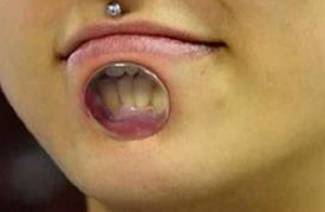
WHY? WHY? WHY? WHY?
If the purpose is to gain attention, it is effective as I find my gaze fixed on the body art, but not the rest of the person. Could it be that rather than drawing attention toward themselves, they are actually diverting it away? Is the message “look at me” or “look at what I have done?” Prison tattoos are recognizable by their crudely drawn images often announcing to the world that they are a “mean motherf*****.” Others may be sending a message as to who or what they are or what they believe. Perhaps there are as many reasons for this need for body decorations as there are people who do them. Whatever the reasons, it must satisfy some basic human need as it has been embodied in cultures throughout history and beyond.
MAKEUP: THEN AND NOW
Some cultures have been able to satisfy their longings for ornamentation by using less permanent procedures by simply painting the surface of their skin. Makeup, like other ways to change or enhance appearances, has been in evidence for at least three thousand years; although, there appears to have been something of a hiatus during the Elizabethan years. With the arrival of the Flapper Girl in the 1920s, modesty took a hit, and the sexy look was in. You may recall that your Grandmother (OK you young whippersnappers think Great Grandmother) did not use any makeup.
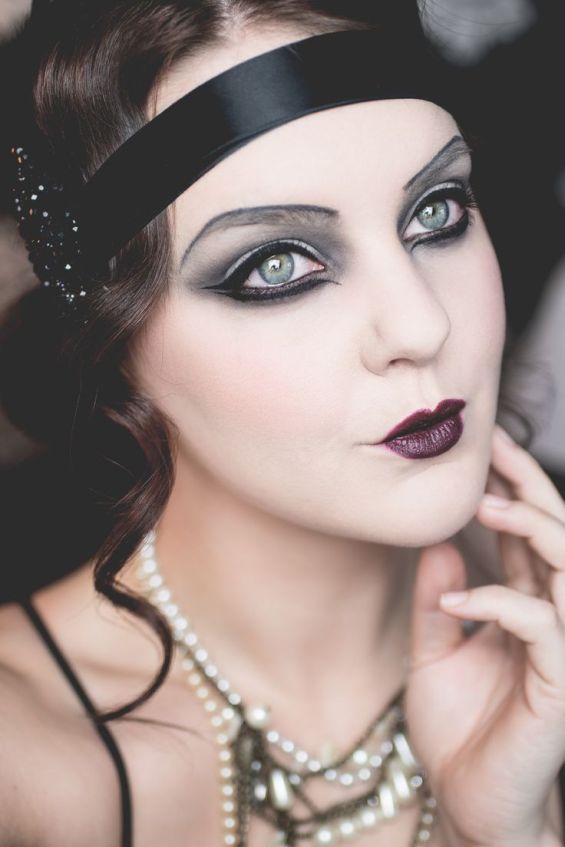
I recall our family being visited by an aunt from the big city when I was a kid. I noticed right away that her lips were very red, cheeks were pink, her eyelashes long, and when she sat I could see her knees. I thought she looked great (had I known what it meant I would have thought sexy), but her brothers and sisters all said she looked like some kind of “floozy.” Today floozies must abound, for the US cosmetic and beauty products industry raked in 64 billion dollars last year.
Although women seem to be concerned about their body image and prefer an idealized weight and form, their primary focus seems to be on integument (hair, skin, and nails). I recall my shock the first time I saw a woman with painted toe nails. I was accustomed to painted fingernails since they had been common since the nineteen twenties, but to paint one’s toenails was really far out and innovative. Now, I find the Chinese had been painting theirs for at least three thousand years. That scenario seems to characterize the circular nature of fashion trends, and it lends credence to the idea that “there is nothing new under the sun.”
THE BUSINESS OF BEAUTY
There is little doubt that when it comes to personal appearance, women spend the most time and resources on hair, either grooming or removing it. The hair salon industry brings in 20 billion dollars per year. The phonebook in my town of less than 30,000 people lists 45 beauty salons. In addition to maintaining an acceptable coiffure, there is also the removal of unwanted body and facial hair. In the sixties, some of the more dedicated feminists refused to shave their legs. Until then, I had no idea that women grew hair on their legs; although I should have realized that pink razor in the shower was used for something. Waxing assures that even stray strands of fuzz on the face is eliminated (for some reason, it is OK to shave legs but never the face).
The female perception of the status of her scalp hair appears to effect drastically her sense of self, mood, and confidence, consequently requiring her rapt attention. A bad hair day can mess up everything; conversely, the standard comment, “I love your hair,” is the ultimate compliment. Today’s long hair styles must require even more time and effort in order to remain beautiful and preserve self-esteem. In some cultures, hair seems to have some sexual connotations, for women are required to cover their heads in much the same manner as we insist women cover their breasts.
MEN’S “BEAUTY” PREOCCUPATION
Contrary to conventional wisdom, it may be that men are more preoccupied with hair than the opposite sex. Perhaps it is a sign of our country’s disarray that there are so many ways for men to deal with the hair on their heads.

There is long hair, short hair, no hair, dreadlocks, ponytails, pigtails, and the most recent version of the obnoxious: the so-called “man bun.” There are also those deliberately designed to wig us out like the mohawk or spiked versions. Shiny hair is out, but in my day no man’s closet was complete without a bottle of Brilliantine. The recent trend of shaved heads should offer an honorable solution for those troubled by male pattern baldness, certainly more sensible and convenient than wearing one of those awful looking rugs.
In my day a hairy chest was something of which to be proud, signifying masculinity, now I am told some men actually shave their body hair. What could this world be coming to?
FACIAL HAIR HAS ALWAYS PRESENTED A PARTICULAR PROBLEM FOR MEN
A full beard could become a repository for the part of lunch which missed his mouth. In times of hand to hand combat, it could also put one at a disadvantage by providing another object to grapple. There seems to have always been some indecisiveness about how much to remove.
In 1901, Mr. Gillette marketed the safety razor, which greatly simplified the process of shaving. Though some, including my grandfather, still preferred the straight razor. Every Sunday afternoon grandad stroked that wicked looking instrument several times over the leather strop, which hung in the kitchen over a wash pan, and he proceeded to lather his face with a soft bristle brush. I was old enough to realize what the phrase “sharp as a razor” meant, so I was transfixed as he deftly scraped a week’s growth of whiskers from his face.
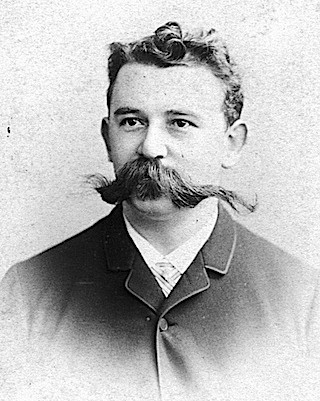
These days, I note some men sport a few days of “scruff” much as did grandad, but then 16 hour days left little time to work on being pretty. Even so, beards were uncommon in those days.
My great uncle had a magnificent handlebar mustache which sagged sorrowfully at the ends during the week when it was saturated with sweat, but perked up with his Saturday night bath, and a tad of beeswax. Now, there seems to be much less consensus as to dealing with facial hair. Just about any type of hirsute sculpting seems to be in play these days. Maybe there aren’t enough role models available these days, or could it be that some are feeling more comfortable risking escape from conformity. I tried a mustache several years ago, but Barb threatened dire consequences if I didn’t remove it. Since retirement, I have become a devotee to the scruff movement of sartorial splendor which she tolerates, unless we go someplace where I will be seen. I have always disliked the idea of shaving every morning, but, like grandad, I still shave at least once a week whether I need it or not.
FASHION POLICE
Since I have already violated the Maggie rule to “keep it short” (I suspect this is particularly applicable to the stuff I write), I will not attempt to take on the subject of women’s clothing fashions. Suffice it to say I have witnessed hemlines rise and fall with great regularity through the years. Likewise, I have seen cleavages appear, disappear, then reappear, and I am still amazed at the ingenuity of those who have been able to produce so many different breast profiles. There have been corsets, nylons, pantyhose, bobbysocks, saddle oxfords, short heels, long heels, extralong heels, shoes of thousands of different designs, and even knee-high boots. There are an infinite number of ways they have found to cover their bodies, and conversely to exhibit their bodies. There is the bikini bathing suit (named after the atoll which was used to test the hydrogen bomb), and as a gift to we lecherous old men we now have skin tight everything. Unfortunately, short shorts have now become short enough to nearly reach the danger zone. Some women even cut holes in their jeans apparently in order to show some skin. I recall reading somewhere that women dress to impress other women rather than men. If that is the case there are some unintended consequences, for they certainly get this old man’s attention.
Although men also get sucked into being told what they should or should not wear, changes in men’s fashion do not occur as rapidly as they do with women. For the past 40 years, a box of neckties has resided on the top shelf of my closet, waiting to be resurrected when wide ties once again become fashionable. Hope is waning as ties seem to have changed little in recent years. I seldom wear a tie anymore, and more guys are going barenecked. If neckties are on their way out, it is not a great loss, as they were not very good at keeping necks warm anyway. Our dear President has introduced a new style of necktie which, although of standard width, is long enough to obscure his fly. I see no signs that it is catching on so far.
In my lifetime, I have witnessed the rise and fall of zoot suits, leisure suits, bell bottoms, white bucks, wingtips, loafers, argyles, suspenders, felt hats, paisley prints, madras shirts, knickers, car coats, pea coats, and trench coats to mention a few things absolutely necessary in the wardrobe of any well dressed man at various times. I recall the time when I would not dream of leaving the house without a key chain fastened to my belt which was draped down to my groin and into my right front pocket. It mattered little what was on the end of that chain if anything, but no thinking man could consider himself fully dressed without it.
WHEN THE DESIRE TO BE DIFFERENT TURNS INTO A FAD
(HATE IT WHEN THAT HAPPENS)
Of course my original question, “Why do we do all this?” does not have a ready answer. In some cases, hero worship or a desire to emulate someone admired probably plays a part. It may be to separate oneself from the herd in order to be noticed or to protest its rules.
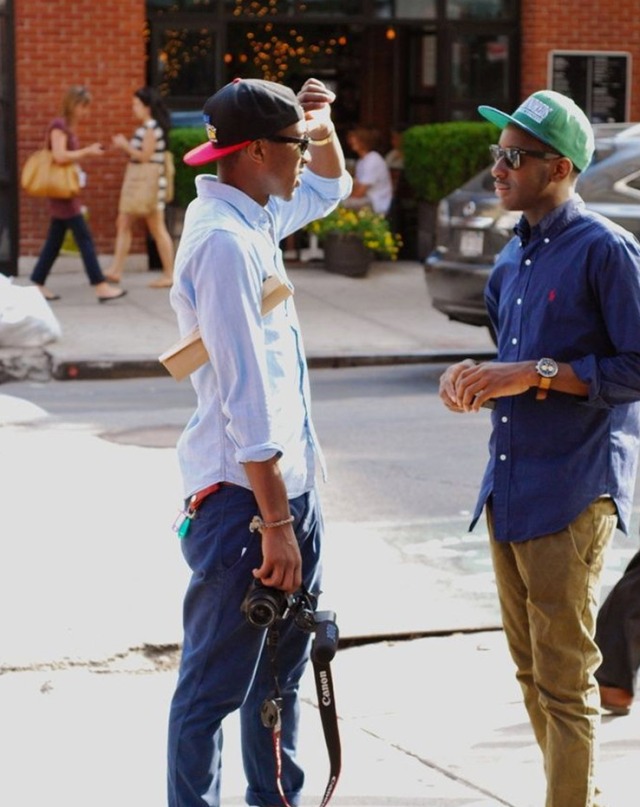
A recent example I have noticed is with the issue of baseball caps worn backwards. Baseball caps are a uniquely American invention devised to keep the sun from player’s eyes. To wear them backwards obviously defeats their purpose, but this was also initially seen by many as a defiant gesture. It is true that with the invention of the catcher’s mask it was necessary for the catcher to turn his cap around; however, it seems unlikely that our unwitting trendsetter who was the first to turn his cap around identified with baseball players. Little did he know that this simple gesture would be copied by millions of young people, thus a trend came into being which had nothing to do with its original meaning. Perhaps as backward facing ball caps no longer attracted attention, he was forced to move on to extremely baggy pants riding low on his hips and poised to drop to his ankles.
A friend who grew up in Africa and was educated in England told me that his first impression of the U.S. upon moving here was the rate of change. He felt that we were never satisfied or content, and that as soon as we achieved something we promptly set out to change it. It seems to me that this is even more true now that our digital world functions at warp speed. This may have some positive if it is responsible for fads like baggy pants to pass quickly. This characteristic would also seem to benefit the fashion industry, allowing them to cycle from being in style to obsolescence rapidly.
We are by nature herd animals. We have survived and thrived by banding together in groups large and small.
As a member of our species, we face an existential dilemma. We have a basic need to conform in order to remain a member of the herd, while at the same time retain our individual identity. We want to be included, but we want to be noticed, to be the same but different. This is exemplified by the woman who, when choosing what to wear, wants something which is “in” but would be mortified were she to attend a social function and find someone wearing the same dress as hers. We have an idealized image of what is a beautiful body which few of us inhabit; consequently, we attempt to hide our flaws and display our assets. When one is able to achieve those goals without violating societal norms, she is deemed fashionable.
BEAUTY IS IN THE EYE OF THE BEHOLDER
I am of the opinion that the human body is beautiful, that is before we set out to defile it with our bad habits. It is true that beauty is in the eye of the beholder, but this beholder sees much of attempts to enhance its appearance as a travesty resulting in things which are unattractive or even repulsive. I am left wondering if the cute little girl with the ring in the septum of her nose who served me coffee the other day is convinced that hardware enhances her beauty. There is something to be said for accentuating the fine points of that which is beautiful. One of my avocations has been to frame pictures, paintings and such. There were times when the mat and frame chosen brought the subject to life and it was transformed to something one wanted to look at. That was very satisfying. The ring in that little girl’s nose didn’t do that for me. There is no way for us to know what she saw in her mirror. It could be that she saw something beautiful, so who am I to judge?
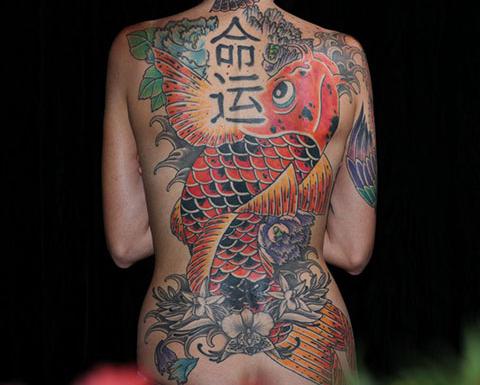
When these young people with tattoos and piercings age into their sixties and seventies, I wonder what they will find repulsive in the behavior of young people? Generational cultural differences are fascinating. Having said that, I am a seventy year old male who thinks earrings are for women. I’m still trying to get over that.
LikeLike
Thanks for your comment. We old folks need to stick together.
LikeLike
Smitty : If you’re really serious about your study of the tattoo culture you owe it to yourself to come to the capital of the tattoo world, Seattle’s Capital Hill, Which is not far from the rather nice area where we reside. When I walk to the big grocery store about 4 blocks away I dip into the edge of the Tattoo “ belt “ ( one of several ). There are several “parlors in each and every block, so if one is to busy you can usually find another within a block. Very efficient and I must say very creative. Some are remarkably creative and artistic——and you can also get “ penetrated “ while you wait, usually at the same establishment—and in place you might never have dreamed of.( further details on request !!). Smitty you have a knack for interesting creative writing. Keep it up—perhaps you should go national—there is a “NEED” ! Jim >
LikeLike
Thanks Jim. You are my biggest and possibly only fan.
LikeLike
No he isn’t now that I’m on board. Wondering how those tats will look like on a 90 yr old person. Ugh!
LikeLike